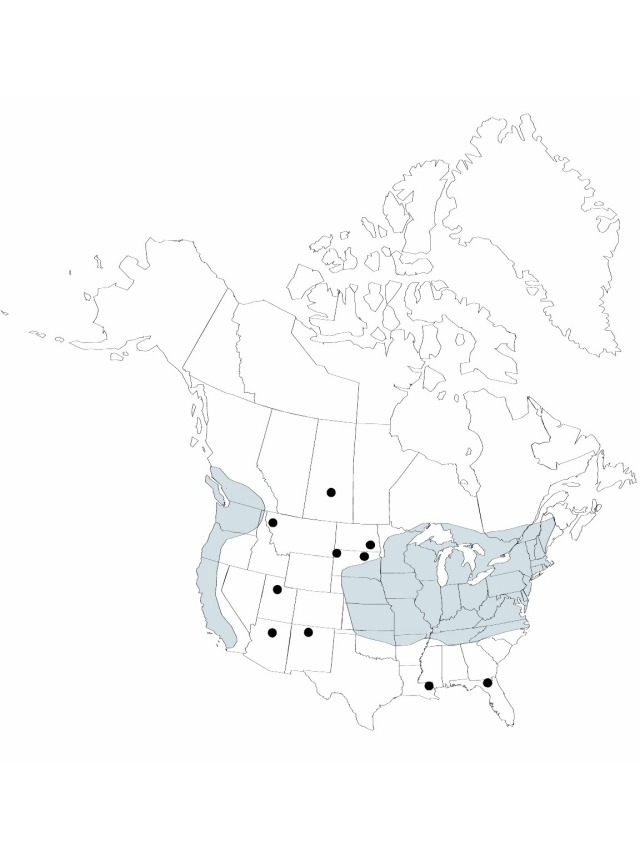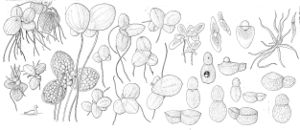Lemna minor
Sp. Pl. 2: 970. 1753.
Roots to 15 cm, tip mostly rounded; sheath not winged. Stipes white, small, often decaying. Fronds floating, 1 or 2–5 or more, coherent in groups, ovate, scarcely gibbous, flat, 1–8 mm, 1.3–2 times as long as wide, margins entire; veins 3(–5) (if more than 3, outer ones branching from inner ones), greatest distance between lateral veins near or proximal to middle; papillae not always distinct (one near apex usually larger); lower surface very seldom slightly reddish (much less than on upper), coloring beginning from attachment point of root, upper surface occasionally diffusely reddish; air spaces 0.3 mm or shorter; distinct turions absent. Flowers: ovaries 1-ovulate, utricular scale with narrow opening at apex. Fruits 0.8–1 mm, laterally winged toward apex. Seeds with 8–15 distinct ribs, staying within fruit wall after ripening. 2n = 40, 42 (B), 50, 63, 126.
Phenology: Flowering (rare) late spring–early fall.
Habitat: Mesotrophic to –eutrophic, quiet waters, in suboceanic, cool-temperate regions with relatively mild winters
Elevation: 0–2000 m
Distribution

Introduced; St. Pierre and Miquelon, B.C., Ont., Que., Sask., Ala., Ariz., Ark., Calif., Conn., Del., D.C., Fla., Idaho, Ill., Ind., Iowa, Kans., Ky., La., Maine, Md., Mass., Mich., Minn., Mo., Mont., Nebr., N.H., N.J., N.Mex., N.Y., N.C., N.Dak., Ohio, Okla., Oreg., Pa., R.I., S.Dak., Tenn., Utah, Vt., Va., Wash., W.Va., Wis., w Eurasia, Africa, Atlantic Islands, Australia (introduced), Australia, New Zealand (introduced).
Discussion
Indication of this species in Newfoundland (H. J. Scoggan 1978–1979) probably refers to Lemna turionifera.
A specimen in the Gray Herbarium from St. Pierre and Miquelon may represent Lemna minor or L. turionifera; its determination is questionable.
Selected References
None.
